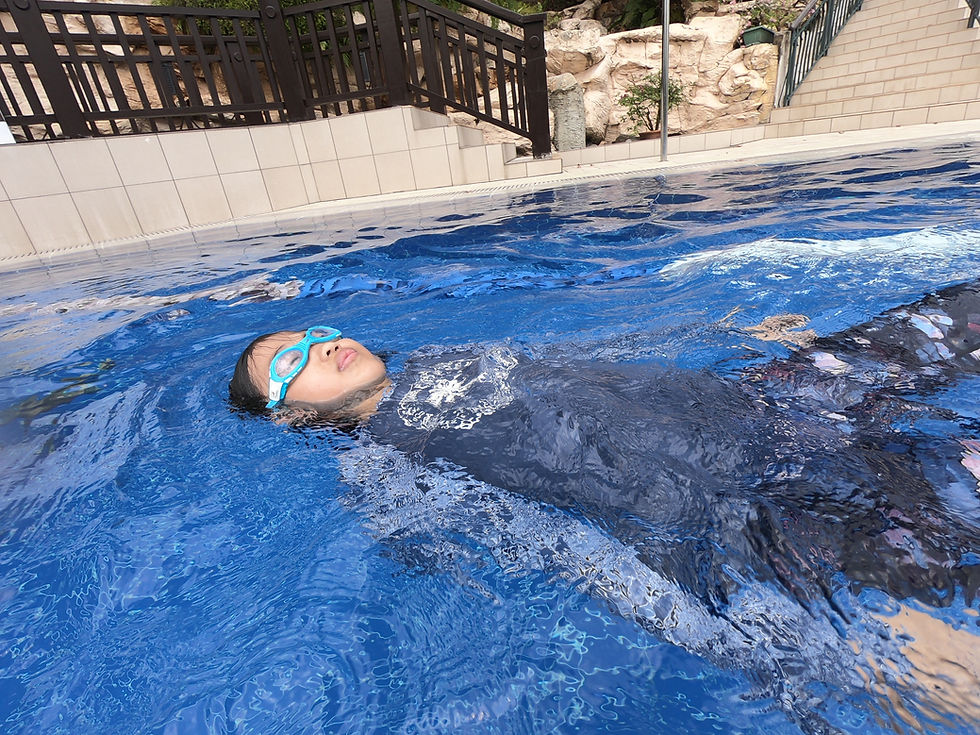Balancing Breaststroke Practice with Other Fitness Activities
- SG Sink Or Swim

- Jan 3
- 4 min read

The breaststroke is a technically demanding swimming stroke that requires strength, coordination, and endurance. While dedicated practice in the water is essential, integrating other fitness activities into your routine can enhance your breaststroke performance, prevent overuse injuries, and improve overall physical fitness. Balancing breaststroke practice with complementary exercises on land and in the pool creates a well-rounded fitness program that keeps you motivated and progressing.
This post will guide you on how to balance breaststroke training with other fitness activities for maximum results, covering benefits, complementary exercises, and sample workout plans.
Why Balance Breaststroke Practice with Other Activities?
Builds Complementary Strength:
Land-based exercises target muscles that may not be fully engaged during swimming.
Improves Cardiovascular Fitness:
Adding activities like running or cycling increases aerobic capacity, benefiting endurance in the pool.
Enhances Flexibility:
Yoga and stretching improve joint mobility, helping maintain proper breaststroke technique.
Prevents Overuse Injuries:
Diversifying workouts reduces repetitive strain on specific muscles and joints.
Boosts Mental Engagement:
Mixing activities prevents boredom and keeps training enjoyable.
Key Muscle Groups in Breaststroke
To create a balanced fitness plan, it’s important to understand the primary muscles engaged in the breaststroke:
Chest (Pectorals): Powers the arm pull.
Shoulders (Deltoids): Assists with arm recovery and rotation.
Core (Abdominals and Obliques): Stabilizes the body during undulation and pull phases.
Legs (Quadriceps, Hamstrings, Glutes, and Calves): Drive the whip kick.
Back (Latissimus Dorsi and Trapezius): Supports arm pull and body alignment.
Complementary Fitness Activities for Breaststroke Swimmers
1. Strength Training
Why It Helps: Builds power for explosive kicks and arm pulls.
Exercises:
Bench press for chest strength.
Squats and lunges for leg power.
Planks and Russian twists for core stability.
Pull-ups for back and shoulder strength.
2. Yoga and Stretching
Why It Helps: Enhances flexibility and joint mobility, reducing the risk of injuries.
Focus Areas:
Hip openers like pigeon pose for kick efficiency.
Shoulder stretches for better arm extension.
Spinal twists to improve core rotation.
3. Cardiovascular Activities
Why It Helps: Increases aerobic endurance and complements swimming stamina.
Options:
Running or cycling for sustained cardio.
Rowing machine to mimic upper body movements used in swimming.
4. Plyometrics
Why It Helps: Develops explosive power for starts and turns.
Exercises:
Box jumps for leg strength.
Jump squats for dynamic power.
Lateral hops to simulate whip kick motion.
5. Cross-Training in Other Strokes
Why It Helps: Improves overall swimming ability and prevents overuse injuries.
Suggestions:
Backstroke to relax the shoulders.
Freestyle for cardiovascular endurance.
Butterfly for overall strength.
Tips for Balancing Breaststroke with Other Fitness Activities
Plan Weekly Sessions:
Divide your week between swimming, strength training, and recovery activities.
Focus on Weaknesses:
Prioritize exercises that address areas of improvement, such as flexibility or leg strength.
Avoid Overtraining:
Allow 1–2 rest days per week for muscle recovery.
Integrate Dryland Workouts:
Include dryland exercises like resistance band pulls or medicine ball slams to mimic swim movements.
Track Progress:
Monitor improvements in stroke efficiency, speed, and endurance through regular testing.
Sample Weekly Training Plan
Day 1: Breaststroke Technique and Strength Training
Pool Session:
200m warm-up (freestyle and backstroke).
6x50m breaststroke drills (focus on kick timing).
4x100m breaststroke at moderate pace (rest 30 seconds between laps).
Dryland:
3x12 bench presses.
3x15 squats.
3x60-second planks.
Day 2: Cardiovascular and Core Training
Cardio:
30 minutes cycling or rowing at moderate intensity.
Core Exercises:
3x15 Russian twists.
3x12 hanging leg raises.
3x10 side planks per side.
Day 3: Active Recovery
Yoga Session:
Focus on hip openers, shoulder stretches, and spinal mobility.
Day 4: Endurance Swim and Plyometrics
Pool Session:
400m warm-up (freestyle and backstroke).
8x100m breaststroke at steady pace (rest 30 seconds).
4x50m freestyle sprints (rest 20 seconds).
Dryland:
3x10 box jumps.
3x15 jump squats.
3x20 lateral hops.
Day 5: Cross-Training in Other Strokes
Pool Session:
200m freestyle warm-up.
4x100m backstroke (focus on streamline).
4x50m butterfly (rest 30 seconds between laps).
200m cooldown (breaststroke).
Day 6: Sprint Training and Strength
Pool Session:
200m warm-up (choice stroke).
8x25m breaststroke sprints (rest 15 seconds between laps).
6x50m freestyle sprints (rest 20 seconds).
Dryland:
3x10 pull-ups.
3x12 medicine ball slams.
3x15 resistance band arm pulls.
Day 7: Rest or Light Activity
Suggestions:
Go for a light walk, stretch, or practice mindfulness.
Key Metrics to Track Progress
Stroke Count: Measure efficiency by counting strokes per lap.
Time Trials: Track speed improvements in timed sets.
Flexibility: Note improvements in range of motion, particularly in the hips and shoulders.
Strength Gains: Record weights and repetitions for strength exercises.
Conclusion
Balancing breaststroke practice with other fitness activities can dramatically enhance your swimming performance while improving overall health and fitness. By combining swimming with strength training, cardio, and flexibility exercises, you’ll build the power, endurance, and coordination needed to excel in the pool.
Remember to listen to your body, plan your sessions wisely, and enjoy the process. With a balanced approach, you’ll not only improve your breaststroke but also achieve a healthier, more versatile fitness routine.





Comments